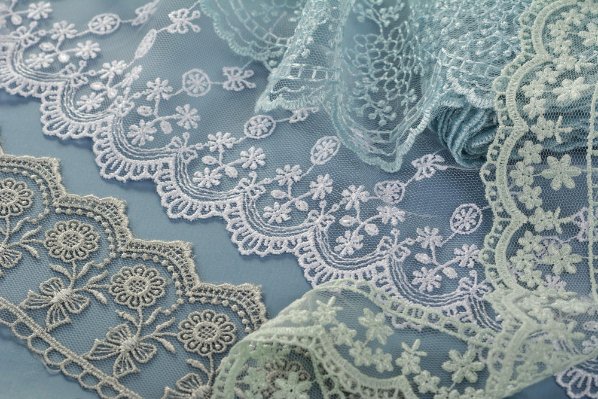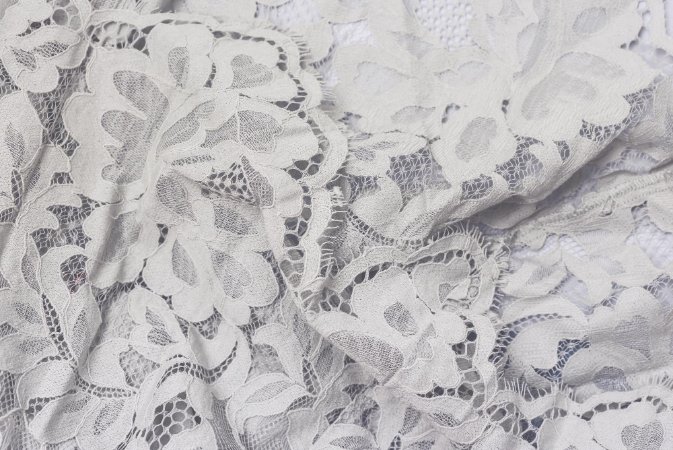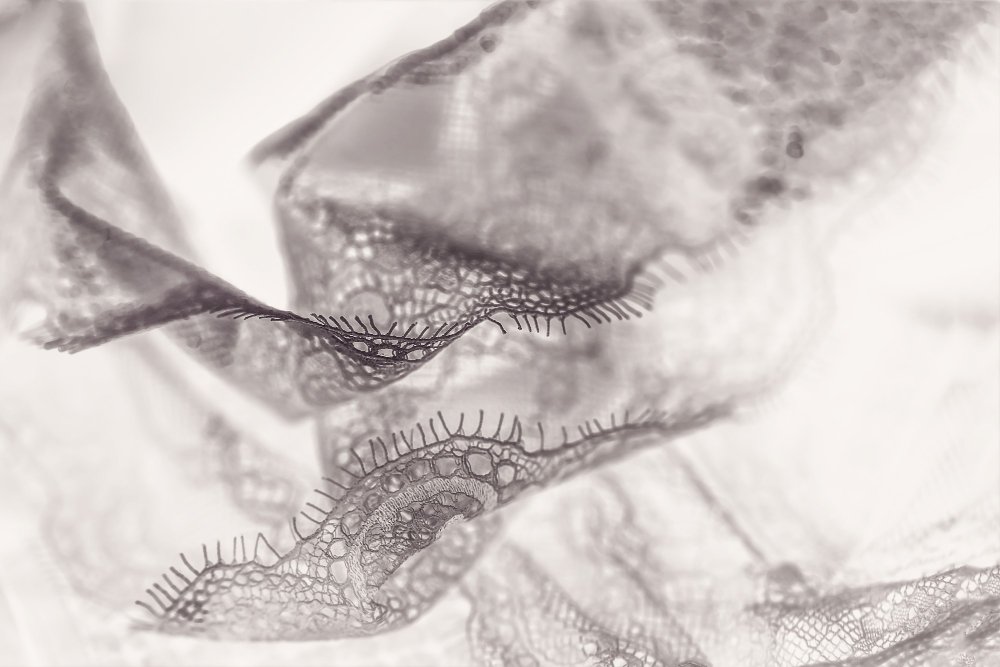Discover the rich heritage, identification techniques, and modern applications of this exquisite French textile
Table of Contents
- What is Valenciennes Lace Fabric?
- History and Craftsmanship
- Authentication and Identification Guide
- What is Vintage Lace Made Of?
- Can You Wash Vintage Lace?
- Is There Such a Thing as Fake Lace?
- How to Store Antique Lace
- Modern Fashion Renaissance
- Practical Uses and Design Ideas
- Investment and Collector’s Market
- Museum Collections and Resources
- Buying Guide
- Frequently Asked Questions
- Conclusion
What is Valenciennes Lace Fabric?
Valenciennes lace stands as one of the most celebrated and technically sophisticated forms of lace fabric in textile history. This exquisite bobbin lace originated in the French city of Valenciennes in the early 18th century, becoming synonymous with luxury, craftsmanship, and timeless elegance.
What sets Valenciennes lace apart from other types like Chantilly lace or Alencon lace is its distinctive flat, seamless texture and the absence of raised outlines (cordonnet). The fabric features an intricate diamond mesh ground that became the hallmark of authentic pieces from 1715 onwards.
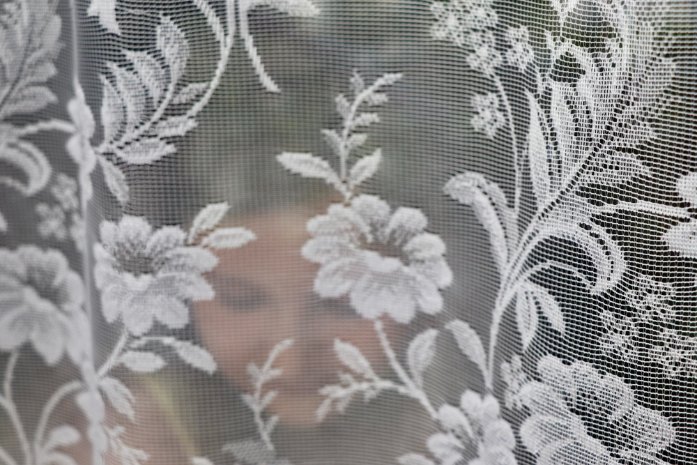
Example of Valenciennes lace fabric showcasing the characteristic diamond mesh ground and seamless construction
Key Fact: Authentic 18th-century Valenciennes lace required up to 1,000 hours of handwork per square meter, making it one of the most time-intensive textiles ever created.
Defining Characteristics
Valenciennes lace is made using a unique four-thread braiding technique that creates both the decorative pattern (toilé) and the net-like background (réseau) simultaneously on a lace pillow. This one-piece construction method distinguishes it from other French lace fabrics that are assembled from separate components.
The fabric’s signature diamond mesh ground, developed around 1715, replaced earlier “fancy mesh” patterns that were thicker and more closed. This evolution marked the transition from “fausse” (false) Valenciennes to “vrai” (true) Valenciennes, establishing the standard that collectors and experts recognize today.
History and Craftsmanship
The Scheldt River was rerouted for navigation between Cambrai and Valenciennes, boosting trade and providing women with leftover flax yarn to create intricate bobbin lace.
Golden age of Valenciennes lace production in France, with artisans perfecting the distinctive four-thread braiding technique.
Introduction of the diamond mesh ground, creating the “vrai” Valenciennes standard that defined authentic pieces.
Production began shifting to Belgium, particularly around Ypres and Ghent, as demand spread across Europe.
Steam-powered looms revolutionized production, reducing creation time from months to hours while maintaining visual appeal.
Only three original workshops remained in France, while Belgian production continued on a smaller scale.
Traditional Production Methods
The creation of Valenciennes lace required extraordinary skill and patience. Artisans worked on stuffed pillows using up to 400 bobbins simultaneously, carefully manipulating threads to create the intricate patterns. The process was so labor-intensive that in 1765, a lace worker would need to work 15-hour days for an entire year to produce just one meter of a sleeve ruffle.
| Period | Threads Used | Output per Week | Pattern Complexity |
|---|---|---|---|
| 1700s (Hand) | Fine linen | 5-10 cm | Custom designs |
| 1900s (Machine) | Cotton/Silk | 50+ meters | Standard repeats |
The transition from handmade to machine production marked a significant shift in accessibility. As noted in an 1892 textile journal, “What took weeks now takes minutes.” While traditionalists initially resisted these changes, mechanization kept the craft relevant during industrialization and made beautiful lace available beyond aristocratic circles.
Authentication and Identification Guide
Distinguishing authentic Valenciennes lace from reproductions requires examining specific structural details developed through centuries-old techniques. Understanding these characteristics is essential for collectors, designers, and anyone working with vintage textiles.
Professional Authentication Checklist
- Examine the diamond mesh ground under 8-10X magnification
- Look for the absence of cordonnet (raised outline threads)
- Check for flat, even texture throughout the piece
- Verify continuous thread paths in handmade pieces
- Inspect tiny picots along edges for authenticity markers
- Assess the integration of pattern and background mesh
Recognizing the Signature Diamond Mesh Ground
The diamond mesh ground acts like a fingerprint for identification. Unlike other textiles, its four-thread braid forms tight intersections without twisted edges, creating a flat surface resembling polished cambric cloth. Traditional pieces show perfect alignment between decorative motifs and background netting, while modern versions often display slight irregularities under magnification.
Traditional Craft Features
- Eight-thread crosses in mesh structure
- Hand-plaited precision in thread alignment
- Uniform texture across entire piece
- Seamless integration of design elements
Modern Production Indicators
- Simplified joins in mesh structure
- Machine-guided pattern placement
- Variations in tension and tightness
- Synthetic fiber blends for affordability
As textile historian Marie Dupont notes, historical methods created seamless integration where “the ground and pattern grew together like ivy on a trellis.” This one-piece construction significantly affects how the material drapes and withstands stress over time.
Expert Tips for Identification
When examining potential Valenciennes lace, always cut along the mesh’s natural lines to prevent fraying. Professional authentication often involves comparing thread consistency, examining mesh ground alignment, and understanding the historical context of construction methods. Museums and specialty dealers maintain extensive reference collections that help establish authenticity and value.
For comprehensive information about lace identification and care, collectors should consult multiple expert sources and consider professional appraisal for valuable pieces.
What is Vintage Lace Made Of?
Understanding the materials used in vintage Valenciennes lace is crucial for proper identification, care, and preservation. The composition directly affects the lace’s durability, appearance, and value in today’s market.
Traditional Materials
Authentic vintage Valenciennes lace was primarily made from fine linen threads, specifically from flax fibers that were locally available in the northern French region. These natural fibers provided the delicate touch and durability that made the lace so prized among European aristocracy.
Historical Context: The finest 18th-century Valenciennes lace used extremely fine linen thread that was so delicate it could barely be seen without magnification, yet strong enough to withstand centuries of use when properly cared for.
Material Evolution Over Time
As production methods evolved, so did the materials used:
| Period | Primary Material | Characteristics | Durability |
|---|---|---|---|
| 18th Century | Fine linen (flax) | Extremely delicate, naturally white | Excellent when preserved |
| 19th Century | Cotton and silk blends | More affordable, varied textures | Good to excellent |
| 20th Century | Cotton, synthetic blends | Machine-friendly, standardized | Variable quality |
The transition from pure linen to cotton and later synthetic blends reflected both economic pressures and technological advances. While some collectors prefer the historical authenticity of linen pieces, many 19th and 20th-century examples demonstrate remarkable craftsmanship regardless of fiber content.
Identifying Fiber Content
Determining the exact material composition of vintage lace requires careful examination. Linen fibers tend to be irregular in thickness and have a naturally lustrous appearance, while cotton fibers are more uniform. Synthetic additions, introduced in the 20th century, often have a different hand feel and may show signs of aging differently than natural fibers.
For those working with various natural vs synthetic fabrics, understanding these material differences is essential for proper care and preservation techniques.
Can You Wash Vintage Lace?
Yes, you can wash vintage Valenciennes lace, but it requires extreme care and the right techniques. Contrary to common fears, gentle cleaning is actually beneficial for preservation, as dust and mold cause more damage than careful washing.
⚠️ Critical Warning
Never use bleach, lemon juice, dishwashing detergent, or salt on vintage lace. These substances can cause irreversible damage to delicate fibers and destroy the historical value of your pieces.
Safe Washing Techniques
Hand Washing Method (Recommended)
- Prepare the washing area: Use a large, clean basin with cool to lukewarm water
- Choose gentle detergent: Use Orvus WA Paste, Woolite, or pH-neutral detergent designed for delicate fabrics
- Pre-soak if needed: For heavily soiled pieces, soak overnight in a solution of OxyClean or Biz enzyme cleaner
- Gentle agitation: Squeeze suds through the lace gently, never twist or wring
- Multiple rinses: Rinse until water runs completely clear to remove all detergent residue
Specialized Cleaning for Stubborn Stains
For yellowed or heavily stained vintage lace, enzyme cleaners like Biz can work remarkable transformations. Soak the lace in a 5-gallon bucket with 1 cup of Biz dissolved in hot water. For severely yellowed pieces, this process may take a week or more, changing the solution daily until the water remains clear.
Expert Cleaning Tips
- Always test cleaning methods on a small, hidden area first
- Use white vinegar in the final rinse to remove soap residue
- Never use fabric softeners or starch on vintage lace
- Handle wet lace with extreme care as it’s most vulnerable when saturated
- Document the cleaning process for future reference
Drying Process
Proper drying is crucial for maintaining the lace’s shape and integrity:
- Support wet weight: Cradle wet lace in clean towels to prevent stretching
- Absorb excess moisture: Wrap in additional towels until damp but manageable
- Flat drying: Spread on a clean sheet on a flat surface
- Gentle blocking: Shape the lace with your hands and use glass jars to hold edges
- Avoid direct sunlight: Unless specifically recommended for whitening
Expert Demonstration: Cleaning Antique Lace
Professional demonstration from The Lace Museum Detroit showing proper techniques for cleaning vintage lace
For those interested in general fabric care techniques, the principles used for vintage lace apply to many other delicate textiles as well.
Is There Such a Thing as Fake Lace?
While the term “fake lace” might seem contradictory, there are indeed significant differences between authentic handmade Valenciennes lace, quality machine-made reproductions, and poor-quality imitations that attempt to deceive buyers.
Understanding Authenticity Levels
Authentic Handmade
18th-19th century pieces made entirely by hand using traditional techniques. These represent the highest quality and historical value.
- Irregular thread paths under magnification
- Perfect integration of pattern and ground
- Natural variations in tension
- Historical provenance when available
Quality Machine-Made
Well-executed machine reproductions that honor the traditional aesthetic while being clearly identifiable as modern production.
- Consistent thread placement
- Modern synthetic or blended fibers
- Precise pattern repetition
- Clear machine construction marks
Deceptive Imitations
Poor-quality pieces marketed as antique or handmade when they are neither, often featuring obvious construction flaws.
- Plastic or synthetic fibers
- Printed rather than woven patterns
- Artificial aging attempts
- Incorrect construction methods
Red Flags for Buyers
When evaluating Valenciennes lace, watch for these warning signs of deceptive practices:
- Artificially aged appearance: Tea staining or chemical treatments to simulate age
- Perfect uniformity: Machine-made pieces sold as handmade should show some variation
- Wrong materials: Synthetic fibers in pieces claimed to be 18th century
- Incorrect construction: Modern techniques in supposedly historical pieces
- Unrealistic pricing: Genuine antique pieces priced far below market value
Collector’s Tip: Some superb quality machine-made pieces may be more valuable than poorly executed handmade work. Focus on quality in design, technique, workmanship, and condition when evaluating any piece.
Legitimate Reproductions vs. Deceptive Fakes
Many contemporary lacemakers and manufacturers create beautiful Valenciennes-style lace using modern techniques. These pieces have value in their own right when honestly represented. The problem arises when such pieces are misrepresented as historical artifacts.
Companies like Solstiss continue to produce exquisite lace using traditional Leavers looms, creating modern pieces that honor the Valenciennes tradition while incorporating contemporary design elements. These represent the evolution of the craft rather than attempts at deception.
For collectors working with cotton lace fabric or other modern materials, understanding the difference between honest reproduction and deceptive imitation protects both investment and historical appreciation.
How to Store Antique Lace
Proper storage is essential for preserving vintage Valenciennes lace for future generations. The right environment and materials can prevent deterioration while maintaining the fabric’s beauty and structural integrity.
Environmental Requirements
Temperature and Humidity
- Cool, consistent temperature (60-70°F)
- Relative humidity 45-55%
- Avoid attics, basements, or areas with fluctuating conditions
- Keep away from heating vents and direct sunlight
Storage Materials
- Acid-free tissue paper for wrapping
- Unbleached muslin or cotton sheets
- Archival-quality boxes (never plastic)
- Cedar balls to deter insects (avoid mothballs)
Handling Practices
- Clean hands or cotton gloves when handling
- Support full weight when moving pieces
- Refold along different lines annually
- Air out stored pieces periodically
Storage Methods
Flat Storage (Preferred)
Whenever possible, store lace pieces flat in acid-free boxes with tissue paper between layers. This method prevents permanent creasing and reduces stress on the fibers. For larger pieces, use oversized archival boxes or specially designed flat storage systems.
Rolled Storage
For very long pieces that cannot be stored flat, carefully roll them around a large-diameter acid-free tube (minimum 4 inches diameter), with acid-free tissue between layers. Never roll tightly or use small tubes that create sharp creases.
Folded Storage
When folding is necessary, use acid-free tissue at fold lines and change fold positions annually during airing sessions. This prevents permanent creases from developing along stress lines.
Storage Don’ts
- Never store in plastic bags (prevents air circulation)
- Avoid cedar chests (fluctuating humidity)
- Don’t use starch before storage (attracts insects)
- Never store in direct contact with wood or cardboard
- Avoid areas with temperature fluctuations
Pest Prevention
Insects like silverfish and carpet beetles can devastate lace collections. Use cedar balls or lavender sachets as natural deterrents. Regularly inspect stored pieces for signs of insect activity, including small holes, debris, or actual insects.
For comprehensive textile preservation, consider the storage principles used for other delicate materials like silk care and fine cotton preservation.
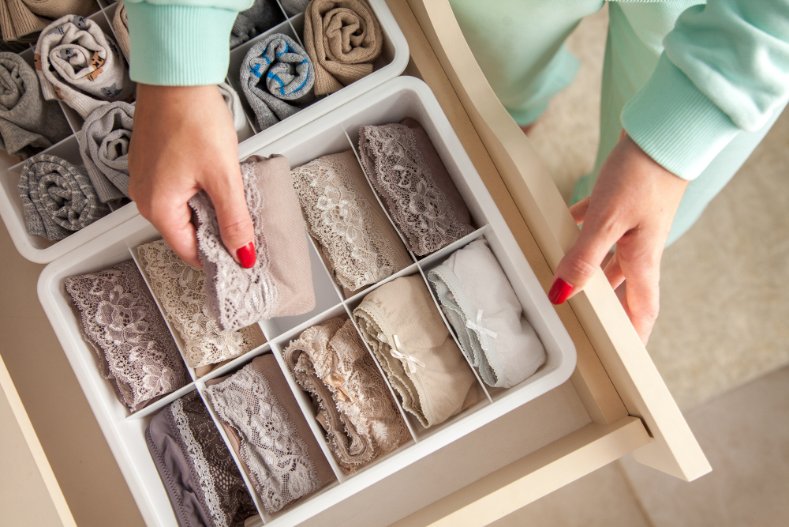
Professional storage setup showing proper materials and techniques for preserving antique lace collections
Modern Fashion Renaissance
Valenciennes lace is experiencing a remarkable revival in 2025, appearing on runways from Paris to New York in fresh, contemporary interpretations that would surprise Victorian sensibilities. This renaissance reflects both nostalgia for craftsmanship and a desire for romantic details in modern wardrobes.
2025 Runway Revival
The Spring/Summer 2025 runway shows featured extensive use of delicate lace details, with designers at Chloé, Fendi, and Alexander McQueen incorporating Valenciennes-style elements into their collections. Unlike traditional applications, modern interpretations focus on unexpected contrasts and versatile styling.
Trend Alert: Fashion insiders are pairing lace pieces with utilitarian items to dial down traditional primness. Think lace-trimmed slip dresses with chunky boots or see-through lace skirts with oversized blazers.
Contemporary Styling Approaches
Contrast Pairing
Modern stylists are breaking traditional rules by pairing delicate lace with:
- Leather jackets and combat boots
- Oversized blazers and structured coats
- Athletic wear and sneakers
- Denim and casual separates
Layering Techniques
Contemporary fashion embraces visible layering:
- Lace camisoles under blazers
- Sheer lace panels in structured garments
- Lace trim on everyday basics
- Mixed textures and weights
Modern Applications
New interpretations include:
- Lace-trimmed activewear
- Minimalist lace accents
- Sustainable and eco-friendly lace
- Digital pattern innovations
Contemporary Production
Modern lace houses like Solstiss continue producing Valenciennes-style lace using advanced Leavers looms, typically creating pieces 8-10 centimeters wide for lingerie applications. These contemporary pieces maintain the visual appeal of traditional techniques while incorporating modern fibers and construction methods.
The current trend toward sustainable fashion has also renewed interest in quality lace production, with manufacturers developing eco-friendly alternatives using organic cotton, recycled materials, and biodegradable fibers.
Celebrity and Street Style Influence
Style icons like Alexa Chung have been spotted incorporating lace pieces into relaxed, everyday outfits, proving that delicate fabrics can feel modern and accessible. This approach has influenced broader adoption of lace elements in contemporary wardrobes.
For those interested in incorporating lace into modern designs, understanding 2025 fashion trends provides valuable context for contemporary applications.
Practical Uses and Design Ideas
Valenciennes lace’s versatility extends far beyond its historical applications in aristocratic bedlinens and lingerie. Modern designers and crafters have discovered innovative ways to incorporate this timeless fabric into contemporary projects.
Fashion Applications
Intimate Apparel
The flat texture and breathable construction of Valenciennes lace make it ideal for modern lingerie design. Unlike bulkier laces, it prevents skin irritation while allowing intricate botanical patterns to show through sheer fabrics. Contemporary designers often use it for:
- Delicate bra and panty sets
- Slip dresses and chemises
- Camisoles and bodysuits
- Bridal lingerie collections
Ready-to-Wear Integration
Modern fashion designers incorporate Valenciennes lace through strategic placement and mixed-media approaches:
Trim Applications
- Hemlines on skirts and dresses
- Sleeve cuffs and necklines
- Pocket details and button plackets
- Seam finishing on luxury garments
Panel Insertions
- Yoke details in blouses
- Side panels in fitted dresses
- Back details in formal wear
- Sleeve insertions for movement
Interior Design Applications
The refined elegance of Valenciennes lace translates beautifully to home décor, offering sophisticated alternatives to heavy traditional furnishing fabrics.
Window Treatments
Straight-edged Valenciennes pieces create stunning curtain panels and valances. The diamond mesh pattern filters light beautifully while maintaining privacy. For dramatic effect, designers often layer multiple widths or combine vintage and contemporary pieces.
Table Linens
Traditional applications remain popular, with modern interpretations including:
- Table runners with contemporary place settings
- Placemats for formal dining
- Decorative overlays on solid tablecloths
- Napkin edging for special occasions
Decorative Accents
Creative applications include lampshade embellishments, pillow trim, and wall art installations. The key is using the lace’s inherent elegance to add texture and visual interest without overwhelming the space.
Design Tip: When working with vintage pieces, always cut along the mesh’s natural lines using sharp fabric scissors to prevent fraying and maintain the lace’s structural integrity.
Crafting and DIY Projects
Valenciennes lace adapts well to various crafting applications, from scrapbooking and card making to jewelry design and mixed-media art. The fabric’s flat profile makes it easier to work with than raised or corded laces.
For those interested in expanding their fabric knowledge for various projects, exploring related materials like eyelet lace or guipure lace can provide additional design options.
Preservation Through Use
Interestingly, careful use can actually help preserve vintage lace by preventing the stagnation that leads to fiber degradation. Regular, gentle handling and appropriate cleaning maintain the fabric’s flexibility and prevent brittleness that comes from prolonged storage.
Investment and Collector’s Market
The market for authentic Valenciennes lace reflects both its historical significance and contemporary demand from collectors, designers, and textile enthusiasts. Understanding market dynamics helps buyers make informed decisions and sellers achieve fair value.
Current Market Trends
Price Ranges by Category
| Type | Condition | Price Range | Market Demand |
|---|---|---|---|
| 18th Century Handmade | Museum Quality | $500-$5,000+ per yard | Very High |
| 19th Century Handmade | Good to Excellent | $100-$800 per yard | High |
| Early Machine Made | Good | $50-$200 per yard | Moderate |
| Modern Quality Reproduction | New | $20-$100 per yard | Steady |
Factors Affecting Value
Historical Significance
- Provenance and documentation
- Age and regional origin
- Connection to notable families or events
- Rarity of pattern or technique
Physical Condition
- Structural integrity
- Staining or discoloration
- Previous repairs or alterations
- Completeness of original piece
Market Factors
- Current fashion trends
- Designer and museum interest
- Availability of similar pieces
- Economic conditions
Investment Considerations
Valenciennes lace can be a sound investment for those with expertise and patience. The most valuable pieces typically combine historical significance, excellent condition, and documented provenance. However, the market requires specialized knowledge to avoid costly mistakes.
Historical Context: In 1685, a quality lace cravat cost 4.5 times a servant’s annual salary, demonstrating the luxury status that continues to drive collector interest today.
Professional Services
Serious collectors often rely on professional services for authentication, appraisal, and restoration. Established auction houses like Phillips have historically held specialized lace sales, while expert dealers provide authentication services and market guidance.
Where Collectors Buy
- Auction houses: Sotheby’s, Christie’s, and specialized textile auctions
- Estate sales: Often yield unexpected treasures
- Antique dealers: Specialists in textiles and lace
- Online marketplaces: Etsy, 1stDibs, and specialized platforms
- Museum deaccessions: Rare but valuable opportunities
Building a Collection
Successful lace collecting requires developing expertise in identification, condition assessment, and market knowledge. Many collectors focus on specific periods, regions, or applications rather than attempting to collect broadly.
Begin with smaller, less expensive pieces to develop expertise before investing in museum-quality examples. Study reference collections in museums and attend textile exhibitions to train your eye for quality and authenticity.
For those interested in related collectible textiles, understanding fabric types and their historical applications provides valuable context for building a comprehensive collection.
Museum Collections and Resources
Museums worldwide house exceptional collections of Valenciennes lace, providing invaluable resources for researchers, collectors, and enthusiasts. These institutions preserve the finest examples while making knowledge accessible through exhibitions and educational programs.
Major Museum Collections
European Collections
- Institut Royal du Patrimoine Artistique, Brussels: Outstanding 18th-century French pieces
- Rijksmuseum, Amsterdam: 19th-century Belgian examples
- The Lace Guild, England: 6,000+ piece collection with study programs
- Cité de la Dentelle et de la Mode, Calais: Focus on production history
North American Collections
- National Museum of American History: 6,000+ lace artifacts with patterns
- The Lace Museum, California: Educational programs and workshops
- Lacis Museum, California: Kliot collection of tools and textiles
- Metropolitan Museum of Art: Costume collection examples
Research Resources
These institutions offer various resources for study and authentication:
Physical Collections
Many museums maintain study collections accessible to researchers and serious collectors. The National Museum of American History, for example, preserves Valenciennes patterns on parchment alongside finished samples, providing insight into historical production methods.
Educational Programs
The Lace Guild offers workshops, publications, and member services including pattern libraries and expert advice. Their quarterly magazines provide ongoing education about techniques, history, and identification.
Digital Archives
Increasingly, museums are digitizing their collections, making high-resolution images available for study. These resources help develop expertise in pattern recognition and construction analysis.
Using Museum Resources
- Schedule appointments for study collection access
- Bring high-resolution photographs of pieces for comparison
- Take detailed notes on construction techniques
- Document patterns and measurements
- Build relationships with curators and researchers
Expert Networks
Museums often connect visitors with networks of textile experts, conservators, and specialized dealers. These professional relationships prove invaluable for authentication, restoration, and market guidance.
Conservation Services
Many institutions offer conservation services or can recommend qualified textile conservators. Professional conservation becomes crucial for valuable pieces showing thread separation, discoloration, or structural damage.
Exhibitions and Special Events
Temporary exhibitions provide opportunities to see exceptional pieces rarely displayed. Museums in Valenciennes and surrounding regions often feature heritage fairs celebrating local lace traditions, offering hands-on learning experiences.
For comprehensive textile education, consider exploring museum resources covering related topics like needle lace techniques and embroidered lace traditions.
Buying Guide
Purchasing Valenciennes lace requires knowledge, patience, and a clear understanding of quality indicators. Whether you’re a beginning collector or experienced buyer, following systematic evaluation procedures protects your investment and ensures satisfaction.
Where to Find Quality Pieces
Traditional Sources
- Estate sales: Often yield unexpected treasures at reasonable prices
- Antique shops: Specialists often have authenticated pieces
- Auction houses: Sotheby’s, Christie’s for museum-quality examples
- Textile fairs: Direct access to specialist dealers
Online Marketplaces
- Etsy: Wide selection but requires careful evaluation
- 1stDibs: Curated selection with professional dealers
- eBay: Extensive inventory, buyer beware approach
- Specialized platforms: LaceMerchant and similar specialist sites
Evaluation Checklist
Before You Buy
- Request detailed, high-resolution photographs
- Ask for measurements and condition reports
- Inquire about provenance and documentation
- Compare prices across multiple sources
- Consider authentication costs for expensive pieces
- Factor in potential restoration expenses
Quality Assessment
Visual Inspection
Examine photographs carefully for signs of damage, repairs, or alterations. Look for consistent mesh patterns, intact edges, and appropriate aging for claimed period. Be suspicious of pieces that appear too perfect or show signs of artificial aging.
Technical Analysis
Authentic handmade Valenciennes lace shows specific characteristics under magnification. When possible, examine thread paths, mesh construction, and integration of pattern elements. Modern reproductions often reveal themselves through too-perfect regularity or incorrect construction methods.
Documentation
Provenance documentation significantly affects value and authenticity confidence. Original family histories, museum deaccession papers, or dealer authentication certificates provide valuable context.
Budget Considerations
Beginning Collectors ($50-$200): Focus on 19th-20th century pieces in good condition for learning identification skills.
Serious Collectors ($200-$1,000): Target documented pieces with clear provenance and excellent condition.
Investment Level ($1,000+): Museum-quality pieces requiring professional authentication and conservation assessment.
Red Flags to Avoid
Warning Signs
- Unrealistically low prices for claimed antique pieces
- Sellers unwilling to provide detailed photographs
- Claims of extreme age without supporting evidence
- Perfect condition pieces allegedly centuries old
- Pressure tactics or “limited time” offers
Modern Alternatives
High-quality contemporary Valenciennes-style lace offers excellent value for practical applications. Companies like Solstiss produce museum-quality pieces using traditional techniques on modern equipment. These pieces serve well for fashion design, restoration projects, or contemporary decorative applications.
For those interested in related lace types for comparison, explore options like applique lace or chemical lace to understand the full spectrum of available materials.
Building Seller Relationships
Establishing relationships with reputable dealers provides access to quality pieces and expert advice. Many specialists offer return privileges and authentication guarantees, providing confidence for significant purchases.
Join collector groups and attend textile society meetings to build knowledge and networks. Experienced collectors often share sources and provide guidance on quality assessment and fair pricing.
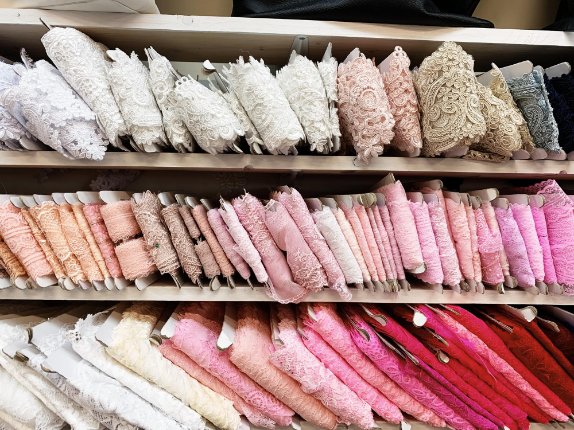
Professional buying guide showing key quality indicators for authentic Valenciennes lace pieces
Learn More: Vintage Lace Crafting
Tutorial on creating vintage lace accessories, demonstrating practical applications of historical techniques
Frequently Asked Questions
Conclusion
Valenciennes lace represents one of textile history’s greatest achievements, bridging centuries of craftsmanship with contemporary fashion sensibilities. From its origins in 18th-century France to today’s runway revivals, this extraordinary fabric continues to captivate collectors, designers, and fashion enthusiasts worldwide.
The journey from requiring 1,000 hours of handwork per square meter to modern machine production illustrates both the evolution of textile technology and the enduring appeal of traditional craftsmanship. Today’s collectors benefit from this rich history while navigating a market that values both authentic antique pieces and quality contemporary reproductions.
Key Takeaways for Collectors and Enthusiasts
Authentication Excellence: Master the identification of diamond mesh ground patterns, examine thread paths under magnification, and understand the absence of cordonnet that defines authentic Valenciennes. These technical skills protect investments and ensure accurate attribution.
Preservation Practices: Proper care extends the life of these textile treasures. Gentle washing with appropriate detergents, climate-controlled storage, and regular inspection maintain both beauty and value. Remember that careful use often preserves pieces better than indefinite storage.
Market Understanding: The current market rewards knowledge and patience. Quality 18th-century pieces command premium prices, while excellent 19th-century examples offer more accessible entry points. Modern reproductions serve practical needs without pretending to historical authenticity.
Contemporary Relevance: The 2025 fashion revival demonstrates that traditional craftsmanship remains relevant. Modern applications range from haute couture to everyday styling, proving that quality textiles transcend temporal boundaries.
Recommendations for Different Audiences
Beginning Collectors: Start with 19th-century pieces to develop identification skills before investing in museum-quality examples. Focus on condition over age initially, and build relationships with reputable dealers who offer return privileges and authentication support.
Fashion Designers: Consider both antique pieces for inspiration and contemporary productions for practical applications. Understanding traditional construction methods informs modern design choices and helps create pieces that honor the craft’s heritage while meeting contemporary needs.
Textile Enthusiasts: Explore museum collections and educational programs to deepen appreciation for historical techniques. The knowledge gained enhances enjoyment of both antique examples and modern interpretations, while supporting preservation efforts.
Interior Designers: Valenciennes lace offers sophisticated alternatives to heavy traditional furnishing fabrics. Its flat profile and delicate patterns work beautifully in contemporary settings when used thoughtfully as accents rather than dominant elements.
Looking Forward
The future of Valenciennes lace lies in balancing preservation with innovation. Museums and educational institutions play crucial roles in maintaining traditional knowledge, while contemporary makers push boundaries with new materials and applications. This dynamic ensures that the craft remains vibrant and relevant for future generations.
The current intersection of sustainability concerns and craftsmanship appreciation creates opportunities for responsible production methods and conscious consumption. Quality pieces, whether antique or contemporary, represent investments in both beauty and environmental responsibility.
As fashion cycles continue to embrace romantic and artisanal elements, Valenciennes lace stands ready to inspire new generations of designers and collectors. Its technical sophistication and aesthetic appeal ensure continued relevance in an increasingly digital world that values tangible craftsmanship.
Final Thought: Whether you’re drawn to Valenciennes lace for its historical significance, investment potential, or aesthetic beauty, remember that each piece represents countless hours of human skill and creativity. Approaching these textiles with knowledge, respect, and appropriate care ensures their preservation for future appreciation while allowing us to enjoy their timeless elegance today.

